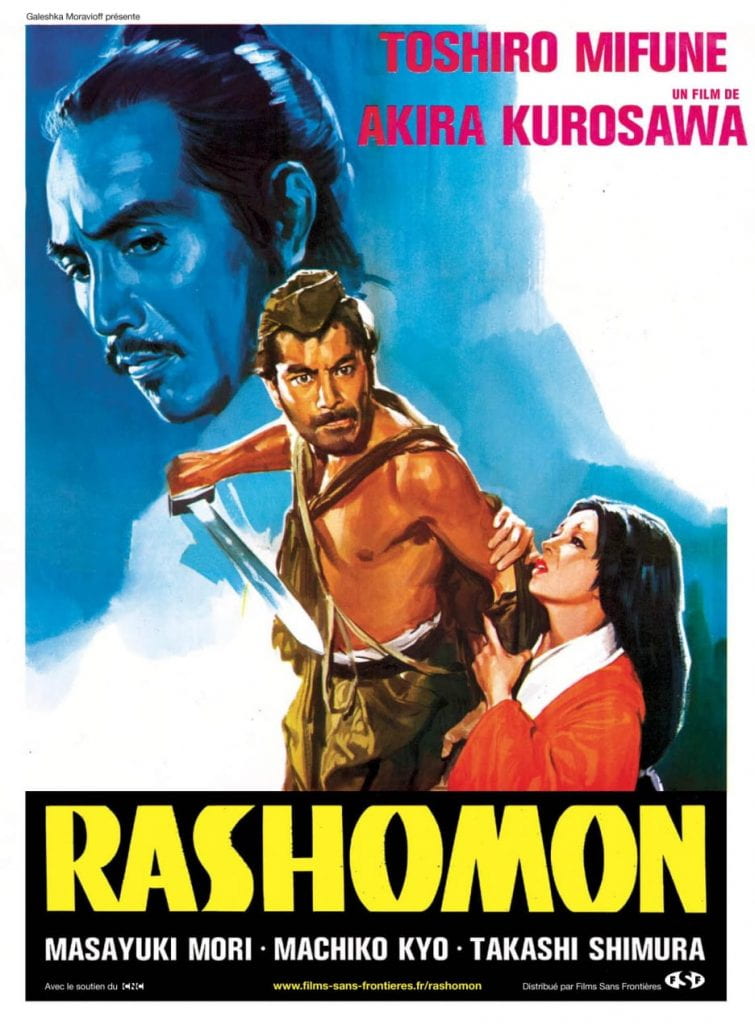
Warning: spoilers throughout!
People all over the world recognize Rashōmon as an important film for many reasons. They acknowledge that it introduced legendary director Akira Kurosawa and his work to the West, that it was the first Japanese film to win the Golden Lion at the Venice Film Festival, and, most famously, that it popularized the idea that human beings all have the potential to experience the same events differently (academic Valerie Aleria called this idea “the Rashōmon effect” in the film’s honor). At the same time, despite its fame, Rashōmon is often misunderstood. It is most remembered for its innovative structure, which is like a Hershey bar being most famous for its black-and-silver wrapper: it’s definitely a part of the appeal, but it ignores what lurks inside of its packaging. By taking a closer look at Rashōmon — namely at the thematic questions it is most interested in answering as well as its true genre — you can find that, despite taking place centuries ago, it still has much to say for our time.
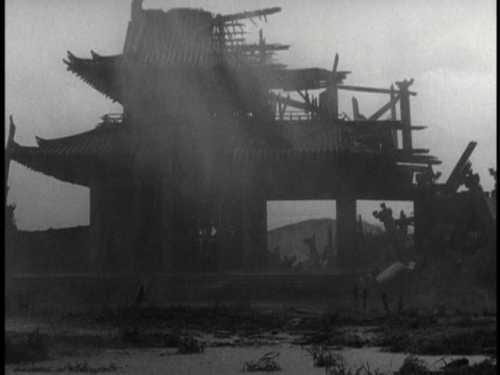
This film takes place at a decaying gate during a rainstorm as a Woodcutter and a Priest tell a Commoner about a strange criminal trial for which they gave testimony. A Samurai has been murdered and his Wife has been raped. Three people — the bandit Tajomaru, the Samurai’s Wife, and the ghost of the Samurai who speaks through a Medium — all give wildly different testimonies as to what had happened. The three men under the gate debate what really happened as they grapple with the bleak time in which they live.
Rashōmon is often thought of as a mystery, and it conforms to some of the tropes of that genre. It features a crime and people attempting to find out who committed it, but the question of how the Samurai died and what exactly happened to his wife is never satisfactorily solved by the film’s characters. They begin not knowing what truly happened (the very first words are the Woodcutter saying “I don’t understand”) and when the film ends, despite one of the characters revealing that he was an eyewitness to part of the crime and telling them what he saw, the characters never truly agree on what occurred in that grove where the Samurai lost his life.
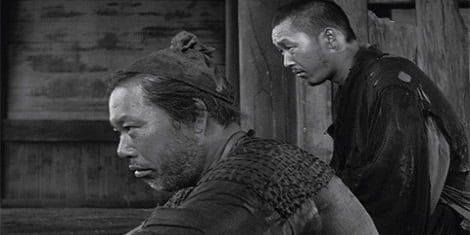
The mystery that the film is much more interested in — and ultimately tries to provide an answer to, which we will get to in good time — is how human beings can be good when surrounded by evil. The famous set of the partially destroyed gate seems to be a symbol of the film’s world, broken but somehow still standing. The natural sets throughout the film, especially the area around the gate, feel like something from a post-apocalyptic movie. Throughout the film, the characters note that times are hard. The Priest says that “year after year it’s been nothing but disasters.” At the same time, they note that people have become, to paraphrase a line from The Departed, “products of their environment.” The Priest and the Woodcutter note examples of evil things people have been doing throughout the film. The Commoner even says, “I heard that the Demon living here in Rashōmon fled in fear of the ferocity of man.” (The word “heard” is crucial. Rashōmon is very much about secondhand information, which makes it relevant in a world where people increasingly get their news from social media and have to deal with fake news.) Over time, the question of whether the Priest will keep his faith in people despite the evil they seem compelled to commit by their innermost desires becomes the central question of the film. This makes Rashōmon seem less like a mystery in the mode of The Maltese Falcon and more like a Bergmanesque drama about the struggle to remain good when everything and everyone around you is bad.
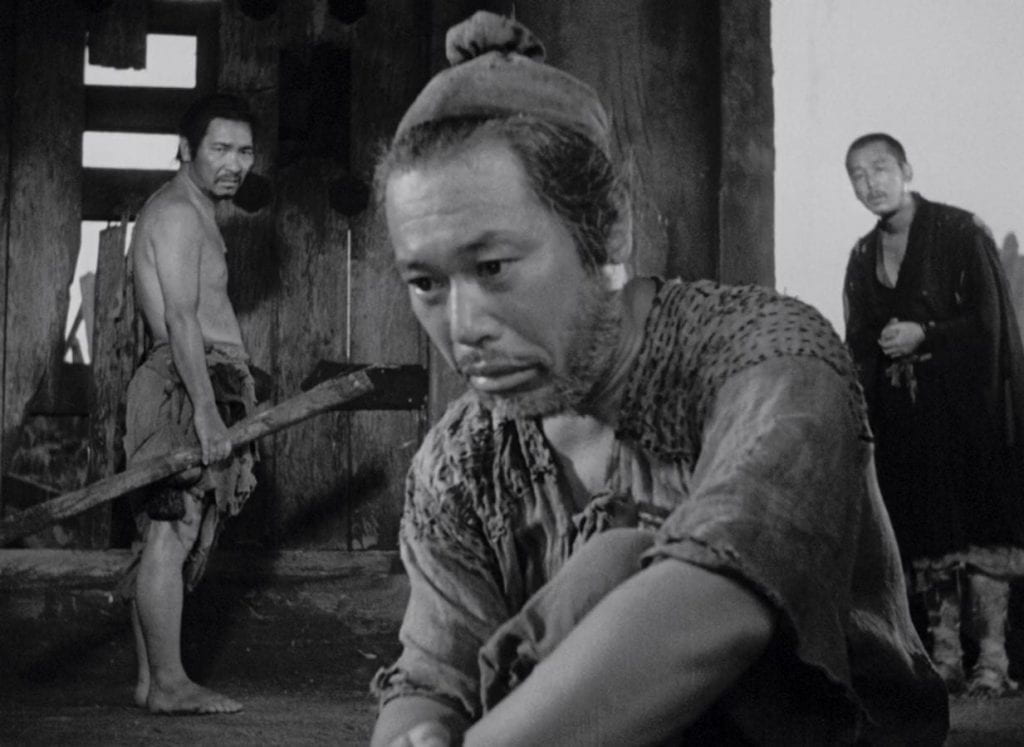
Rashōmon also works well as an example of what I would call its true genre: horror. This is partially due to its visual and audio styles. A fast horizontal tracking shot that follows the Woodcutter as he runs through a forest, terrified by the body of the Samurai, has a nightmarish quality that would make Hitchcock jealous. Kurosawa also uses dark lighting and intense close-ups to bring out the dark emotions of the film’s story. There are several examples of the film’s use of sound to create fear — Fumio Hayasaka’s disquieting score, the pounding sound of the storm ravaging the Rashōmon gate — but the most effective example is found in what is Rashōmon’s most blatantly horror-movie sequence, in which a medium is possessed by the spirit of the murdered Samurai. The Medium’s voice is dubbed by the Samurai, which creates an unearthly effect every time she opens her mouth. All of these devices help to accentuate the horrifying nature of the film’s story.
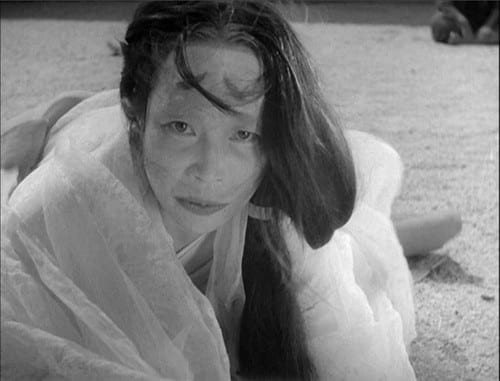
Rashōmon would be a great film to watch at any time, but it is especially relevant to the world of today. Increasing catastrophes brought on by climate change make the massive storm at the Rashōmon gate seem quaint. The rise of authoritarian governments make the characters’ warnings about the evils of human beings more relevant. It’s worth noting that what makes the events of the trial that cause the Priest and the Woodcutter to fall into a deep despair is the breakdown of truth represented by different potentially false perspectives, and that the current occupant of the White House, as of October 9th, has made 13,435 false or misleading statements in his 993 days in the nation’s most famous residence.
It can be hard in such times to know what to do. But Rashōmon has an answer for that question, which also answers its question as to whether the Priest should continue to have faith in humanity. After discovering a baby in the Rashōmon gate, the Woodcutter, guilt-ridden by something he had done earlier, tells the Priest that he will take the infant home and raise it as his own. The Priest, touched by his decision, tells him that he has restored his faith in people. Even in an environment overwhelmed by evil, the film argues, human beings still have the capacity to choose to do something good. These decisions can be small, but the very act of making them shows that humanity might be able to save itself.
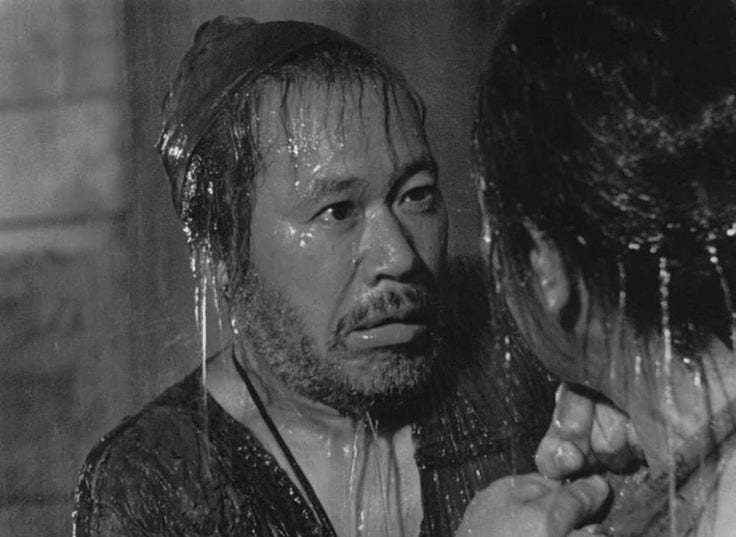
Rashōmon has an enviable legacy. Its subjective flashbacks have inspired countless films and parodies, and even its title has become famous. But it deserves to be remembered for more than its structure or status as Kurosawa’s breakthrough film. It remains a vital testament about the horrors that humans can inflict and the hope to which they cling. In a world that so often seems overwhelmed by darkness, Rashōmon is a candle, sparking little lights in all who watch it and take its ultimate message to heart.
Rashōmon will screen at the IU Cinema on Dec. 6 as part of the series The Rashōmon Effect and Themester 2019: Remembering and Forgetting.

Jesse Pasternack is a graduate of Indiana University. During his time at IU, Jesse was the co-president of the Indiana Student Cinema Guild. He also wrote about film, television, and pop culture for the Indiana Daily Student. Jesse has been a moderator at Michael Moore’s Traverse City Film Festival and is a friend of the Doug Loves Movies podcast. An aspiring professional writer-director, his own film work has appeared at Campus Movie Fest and the Anthology Film Archives in New York City.